Text
Traverse the Tranquil Trails: The Tsum Valley Trek in Nepal
Welcome adventure seekers! If you're searching for your next spectral journey, a paradise off the beaten path, look no further than the tranquil trails of the Tsum Valley Nepal.
A Hidden Gem in the Himalayas
Tucked away in the Himalayas' northern reaches, Tsum Valley, also known as the 'hidden valley', is a pristine sanctum that until recently, remained secluded from the typical trekking routes in Nepal. The remoteness has helped conserve the unique culture, traditional lifestyle, and profound spirtual resonance of the region.
Tsum Valley Trek - A Soulful sojourn
The journey into the heart of Tsum Valley is a tranquil voyage that devoutly echoes ancient Tibetan Buddhism. Embarking on Tsum Valley Trek takes you through some of the region's most grandiose and unspoiled landscapes, offering an array of experiences that are a harmonious blend of cultural immersion and breathtaking mountain scenery.
The Riches of the Route and Its People
Through verdant farmlands, terraced fields, and tranquil hamlets, the path ascends to beautiful pine, oak and rhododendron forests, leading to yak pastures and ultimately, the backdrop of majestic snow-kissed peaks. Every village along the trek reveals distinct traditional architecture, prayer stones, mani walls, and ancient monasteries, bringing to life the region's deep-rooted spirituality and cultural richness. The humble and heartwarming welcome of the Tsumbas (local residents) adds depth to the uniqueness of this trek.
Practicalities and Preparations
Acclimatization and fitness are key considerations for the Tsum Valley Trek. Although the trails aren't extraordinarily strenuous, they steadily ascend to elevations reaching over 3700m. It is advisable to start preparing physically at least a month before the trek. A guide not just offers the needed local insight along the journey but also supports eco-tourism.
Remember: This divine voyage is not just about conquering peaks, but about savouring quiet, introspective moments, while being dwarfed by the grandeur around.
When to Explore
The best time to embark on the Tsum Valley Trek is in Spring (March-May) or Autumn (September- November) when the weather conditions are most favourable.
0 notes
Text
Guide to Lower Dolpa Trek, Nepal
Lower Dolpa Trek is an adventurous trek located in the remote part of western Nepal. The route features beautiful landscapes, rich biodiversity, mountain ranges, and the unique culture of the Dolparegion. Here's how you can proceed:
Step 1: Preparation at Home
Physical Conditioning: Begin with lightweight training at least 3 months prior to the trek, which can be gradually increased as per your capacity and stamina. Running, swimming, or cycling can be really helpful.
Gear Up: Make sure you have appropriate gears which include trekking boots, trekking poles, thermal clothes, water purifier, first-aid box, sunscreen, hat, sunglasses and more.
Get Necessary Permits: To do Lower Dolpa Trek, you require a TIMS card (Trekkers' Information Management System), Lower Dolpa Permit and Shey-Phoksundo National Park Permit.
Flight Tickets & Accommodation: Book your flight to Nepal and accommodation in Kathmandu.
Step 2: Arrival in Kathmandu
Visitor Visa: On arrival at the Tribhuvan International Airport, you will need to fill up the form for a visitor visa.
Acclimatizing: Spend a couple of days in Kathmandu for sightseeing, purchasing any missing gear, meeting your trek group/guide and acclimatizing to Nepali weather.
Step 3: Journey to Nepalgunj
Take a flight to Nepalgunj from Kathmandu. Stay overnight in Nepalgunj.
Step 4: Flight to Juphal
Take another flight to Juphal. The trekking starts from here.
Step 5: Trekking Begins
Juphal to Dunai: Start your journey with a downhill walk to Thuli Bheri Valley, and eventually reach Dunai.
Dunai to Ankhe: From Dunai, your trail leads to Ankhe.
Ankhe to Sulighat Village: Trek from Ankhe to the beautiful Sulighat Village.
Step 6: Enter the Shey-Phoksundo National Park
To Phoksundo Lake: Trek through beautiful pine forests and reach the magnificent Phoksundo Lake.
Phoksundo Lake to Phoksundo Khola: From Phoksundo lake, the trek leads to Phoksundo Khola.
Step 7: Enter Inner Dolpa
Phoksundo Khola to Phoksundo Bhanjyang: This is a tough trek leading you to the Phoksundo Bhanjyang.
Cross Kang-La pass: From Phoksundo Bhanjyang, you need to cross the Kang-La pass then walk downhill to reach Shey Gompa.
Trek to Namduna Gaun via Saldang La Pass: This will be another challenging part of the trek but the beautiful scenery will definitely make it worth it.
Trek to Saldang: From Namduna Gaun, it's a downhill walk to Saldang.
Step 8: Return Journey
Saldang to Jeng-la Base Camp via Yangze Gompa: Trek through villages like Cha Gaon and Tiling, finding yourself at Jeng-la Base Camp.
Cross Jeng-La Pass, trek to Dho Tarap: Cross Jeng-La pass then walk downhill to Dho Tarap.
Trek to Tarap Khola (Kamakharka): From Dho Tarap, the journey heads to Tarap Khola.
Continue to Khanigaon: Trek through forests and you will soon reach Khanigaon.
Khanigaon to Dunai: Start the day by crossing the bridge at Dho Tarap Khola and trek back to Dunai.
Dunai to Juphal: It's an easy walk back to Juphal.
Step 9: Back to Kathmandu
Take a flight back to Nepalgunj and then another flight back to Kathmandu. Have some rest and celebrate the successful completion of your trek.
Please note that this guide offers a general overview of the Lower Dolpa Trek in Nepal and you should consult a professional trekking agency for detailed information, safety measures and guided trips.
0 notes
Text
Annapurna Circuit Trek With Tilicho Lake
The Annapurna Circuit Trek with Tilicho Lake in 14 days is an exciting journey, offering diverse landscapes and cultural experiences. Here's an itinerary:
Day 1-2: Kathmandu to Chame
Drive from Kathmandu to Chame via Besisahar and Dharapani.
Begin trekking towards Chame and settle in.
Day 3-4: Trek to Upper Pisang and Manang
Trek through beautiful landscapes to Upper Pisang and continue to Manang.
Spend an extra day in Manang for acclimatization and exploration.
Day 5-6: Trek to Tilicho Base Camp
Trek to Tilicho Base Camp, passing through scenic trails and diverse terrain.
Hike to Tilicho Lake and back to the base camp.
Day 7-8: Trek to Yak Kharka and Thorung Phedi
Trek to Yak Kharka and then to Thorung Phedi, preparing for the pass crossing.
Acclimatize and rest in Thorung Phedi.
Day 9: Cross Thorung La Pass, Trek to Muktinath
Early morning trek to Thorung La Pass (5,416m) and descend to Muktinath.
Experience the diverse landscapes along the way.
Day 10-11: Trek to Jomsom via Kagbeni and Marpha
Trek to Jomsom via Kagbeni, exploring the unique villages and apple orchards.
Spend an extra day in Jomsom or Marpha for relaxation and sightseeing.
Day 12-13: Fly to Pokhara and Return to Kathmandu
Fly from Jomsom to Pokhara and then return to Kathmandu.
Spend the remaining time in Kathmandu for relaxation or exploration.
This itinerary combines the Annapurna Circuit with a visit to Tilicho Lake, providing a comprehensive experience of the region's natural beauty and cultural diversity. It's essential to maintain proper acclimatization, stay hydrated, and be prepared for varying weather conditions at high altitudes.
0 notes
Text
Annapurna base camp trekking with its cost, itinerary, and best season
Trekking to Annapurna Base Camp (ABC) is a fantastic adventure! The cost, itinerary, and best season can vary based on preferences, tour operators, and weather conditions. Here's a general overview:Cost:
Permit Fees: Annapurna Conservation Area Permit (ACAP) and Trekkers' Information Management System (TIMS) card are required. Costs can range from $20 to $40 each.
Guide/Porter Fees: If you hire a guide or porter, it can range from $20 to $40 per day.
Accommodation: Tea houses along the trek route charge around $5 to $10 per night.
Food: Budget around $15 to $25 per day for meals.
Miscellaneous: Transportation, equipment rental, and personal expenses can add up to another $200 to $400 for the entire trek.
Itinerary (Typical 10-14 days):
Here's a common itinerary, subject to change based on preferences and pace:
Day 1-2: Pokhara to Nayapul, trek to Tikhedhunga/Ulleri.
Day 3-4: Trek to Ghorepani, visit Poon Hill for sunrise, then to Tadapani.
Day 5-7: Trek to Chhomrong, then to Dovan, Deurali, and finally Annapurna Base Camp.
Day 8-10: Trek back down through Bamboo, Jhinu Danda (hot springs), and to Nayapul; return to Pokhara.
Best Season:
Spring (March to May): Blooming rhododendrons and stable weather make it popular.
Autumn (September to November): Clear skies, mild temperatures, and great visibility make this another prime season.
Winter (December to February): Colder but less crowded. Days are clear, but there may be snow at higher altitudes.
Monsoon (June to August): Not recommended due to heavy rainfall, slippery trails, and potential landslides.
Tips:
Fitness: It's a moderate trek, but some sections involve steep climbs and descents. Moderate fitness is recommended.
Altitude: Be cautious about altitude sickness. Acclimatize properly and drink plenty of water.
Equipment: Proper trekking gear, including sturdy footwear and warm clothing, is essential.
Guide/Porter: Consider hiring a guide or porter for safety and support, especially if it's your first time trekking in the region.
Always check current conditions and consult with local trekking agencies for updated information before planning your trip.
0 notes
Text
Annapurna Circuit Trek With Tilicho Lake

The Annapurna Circuit Trek with Tilicho Lake in 14 days is an exciting journey, offering diverse landscapes and cultural experiences. Here's an itinerary:
Day 1-2: Kathmandu to Chame
Drive from Kathmandu to Chame via Besisahar and Dharapani.
Begin trekking towards Chame and settle in.
Day 3-4: Trek to Upper Pisang and Manang
Trek through beautiful landscapes to Upper Pisang and continue to Manang.
Spend an extra day in Manang for acclimatization and exploration.
Day 5-6: Trek to Tilicho Base Camp
Trek to Tilicho Base Camp, passing through scenic trails and diverse terrain.
Hike to Tilicho Lake and back to the base camp.
Day 7-8: Trek to Yak Kharka and Thorung Phedi
Trek to Yak Kharka and then to Thorung Phedi, preparing for the pass crossing.
Acclimatize and rest in Thorung Phedi.
Day 9: Cross Thorung La Pass, Trek to Muktinath
Early morning trek to Thorung La Pass (5,416m) and descend to Muktinath.
Experience the diverse landscapes along the way.
Day 10-11: Trek to Jomsom via Kagbeni and Marpha
Trek to Jomsom via Kagbeni, exploring the unique villages and apple orchards.
Spend an extra day in Jomsom or Marpha for relaxation and sightseeing.
Day 12-13: Fly to Pokhara and Return to Kathmandu
Fly from Jomsom to Pokhara and then return to Kathmandu.
Spend the remaining time in Kathmandu for relaxation or exploration.
This itinerary combines the Annapurna Circuit with a visit to Tilicho Lake, providing a comprehensive experience of the region's natural beauty and cultural diversity. It's essential to maintain proper acclimatization, stay hydrated, and be prepared for varying weather conditions at high altitudes.
0 notes
Text
Annapurna base camp trekking with its cost, itinerary, and best season

Trekking to Annapurna Base Camp (ABC) is a fantastic adventure! The cost, itinerary, and best season can vary based on preferences, tour operators, and weather conditions. Here's a general overview:Cost:
Permit Fees: Annapurna Conservation Area Permit (ACAP) and Trekkers' Information Management System (TIMS) card are required. Costs can range from $20 to $40 each.
Guide/Porter Fees: If you hire a guide or porter, it can range from $20 to $40 per day.
Accommodation: Tea houses along the trek route charge around $5 to $10 per night.
Food: Budget around $15 to $25 per day for meals.
Miscellaneous: Transportation, equipment rental, and personal expenses can add up to another $200 to $400 for the entire trek.
Itinerary (Typical 10-14 days):
Here's a common itinerary, subject to change based on preferences and pace:
Day 1-2: Pokhara to Nayapul, trek to Tikhedhunga/Ulleri.
Day 3-4: Trek to Ghorepani, visit Poon Hill for sunrise, then to Tadapani.
Day 5-7: Trek to Chhomrong, then to Dovan, Deurali, and finally Annapurna Base Camp.
Day 8-10: Trek back down through Bamboo, Jhinu Danda (hot springs), and to Nayapul; return to Pokhara.
Best Season:
Spring (March to May): Blooming rhododendrons and stable weather make it popular.
Autumn (September to November): Clear skies, mild temperatures, and great visibility make this another prime season.
Winter (December to February): Colder but less crowded. Days are clear, but there may be snow at higher altitudes.
Monsoon (June to August): Not recommended due to heavy rainfall, slippery trails, and potential landslides.
Tips:
Fitness: It's a moderate trek, but some sections involve steep climbs and descents. Moderate fitness is recommended.
Altitude: Be cautious about altitude sickness. Acclimatize properly and drink plenty of water.
Equipment: Proper trekking gear, including sturdy footwear and warm clothing, is essential.
Guide/Porter: Consider hiring a guide or porter for safety and support, especially if it's your first time trekking in the region.
Always check current conditions and consult with local trekking agencies for updated information before planning your trip.
0 notes
Text
The Muktinath Helicopter Tour

Nestled in the heart of the Himalayas, the sacred temple of Muktinath stands as a beacon of spiritual solace and historical richness. Revered by both Hindus and Buddhists, Muktinath is more than a temple—it's a journey to the soul's liberation. Our Muktinath Helicopter Tour from Pokhara offers a unique and profound way to experience this holy site, combining spiritual pilgrimage with breathtaking aerial views of Nepal's magnificent landscapes.
As the rotor blades begin to whirl, marking the start of our journey from Pokhara, anticipation and reverence intertwine. The temple, located in the Muktinath Valley beneath the towering Thorang La mountain pass, is not just a destination but a passage to spiritual awakening. For Hindus, Muktinath (meaning 'the place of liberation') is a sacred Vishnu temple, while Buddhists revere it as 'the place of hundred waters', a nod to the 108 water spouts that grace the temple's boundary. This number holds profound significance in both Hindu and Buddhist philosophy, symbolizing the universe's completeness and sacredness.
The Significance of Muktinath
Muktinath, meaning 'the place of liberation,' is not only a religious shrine but also a cultural amalgamation where Hindu and Buddhist beliefs converge. For Hindus, it is a sacred Vishnu temple, a significant part of the Vaishnavite tradition. Buddhists revere it as Chumig Gyatsa, 'the place of hundred waters,' with the 108 water spouts around the temple embodying the philosophy of life and the universe. This sacred number, 108, holds immense significance in Eastern spirituality, symbolizing the universe's completeness.
MuktinathHelicopter Tour From Pokhara
Our journey begins at the break of dawn in Pokhara, a city known for its serene lakes and breathtaking mountain views. A private vehicle whisks us from our hotel to Pokhara Airport, where our aerial chariot awaits. After safety briefings and preparations, we board the helicopter, hearts brimming with anticipation.
Over the Mountains and Valleys
As our helicopter ascends, leaving behind the vibrant city of Pokhara, we enter a realm where nature's majesty unfolds beneath us. The journey is a visual feast—rolling hills give way to the rugged beauty of the Annapurna Mountain Range. Peaks such as Machhapuchhre, Nilgiri, and Dhaulagiri, renowned for their ethereal beauty, stand as silent sentinels over the landscape.
Flying over the Ghorepani-Tatopani route, we see a patchwork of villages like Marpha and Jomsom. The view is a narrative of nature's magnificence, with each twist in the river and turn in the valley revealing the heart of Nepal's natural and cultural richness.
Landing at Ranipauwa
After about 45 minutes, we descend into Ranipauwa. The landscape here is starkly different – a high-altitude desert that speaks of the resilient nature of the mountains. From Ranipauwa, a 20-minute hike or an optional horse ride leads us to the gates of Muktinath.
Muktinath: A Spiritual Haven
The temple complex is a spiritual haven. The sound of the 108 water spouts, each carved in the likeness of cows' heads, creates a serene ambiance. Pilgrims bathe under these spouts, a ritual believed to bring salvation. The Jwala Mai Temple and a Buddhist Gumba nearby are testaments to the site's religious harmony.
Inside the temple, the air is thick with devotion. Pilgrims perform puja, offering prayers and lighting butter lamps. For a moment, amidst the chanting and the ringing bells, one feels a profound connection to something greater than oneself.
Muktinath Helicopter Tour Cost:for 2024
The helicopter charter cost for Muktinath Mandir Darshan from Kathmandu and Pokhara.
Pax From Pokhara From Kathmandu
5 USD 580.00 USD 960.00
4 USD 725.00 USD 1200.00
3 USD 970.00 USD 1600.00
2 USD 1450.00 USD 2400.00
1 USD 2900.00 USD 4800.00
Notes:
From Kathmandu, it is a 3 hours tour and 2 hours from Pokhara.
After landing, 1 hour grounded time will be provided to visit the Temple and to complete all the ritual activities.
All the above rates are in US Dollars Currencies, per-person basis.
Rate valid till DEC 2024.
The Return Journey
After spending about half an hour at the temple, we hike back to Ranipauwa. The return flight offers a different perspective, with the morning light casting new hues over the landscapes we flew over. The return to Pokhara is a quiet journey, each of us lost in reflections on the divine experience.
The Muktinath Helicopter Tour from Pokhara is more than just a visit to a religious site; it is a journey of spiritual and cultural discovery. It brings into focus the grandeur of the Himalayas and the depth of Nepal's religious traditions. For those seeking a pilgrimage, an adventure, or simply a moment of introspection, this tour is a gateway to experiencing the divine.

0 notes
Text
The Muktinath Helicopter Tour
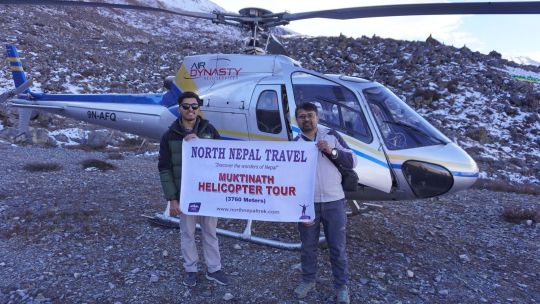
Nestled in the heart of the Himalayas, the sacred temple of Muktinath stands as a beacon of spiritual solace and historical richness. Revered by both Hindus and Buddhists, Muktinath is more than a temple—it's a journey to the soul's liberation. Our Muktinath Helicopter Tour from Pokhara offers a unique and profound way to experience this holy site, combining spiritual pilgrimage with breathtaking aerial views of Nepal's magnificent landscapes.
As the rotor blades begin to whirl, marking the start of our journey from Pokhara, anticipation and reverence intertwine. The temple, located in the Muktinath Valley beneath the towering Thorang La mountain pass, is not just a destination but a passage to spiritual awakening. For Hindus, Muktinath (meaning 'the place of liberation') is a sacred Vishnu temple, while Buddhists revere it as 'the place of hundred waters', a nod to the 108 water spouts that grace the temple's boundary. This number holds profound significance in both Hindu and Buddhist philosophy, symbolizing the universe's completeness and sacredness.
The Significance of Muktinath
Muktinath, meaning 'the place of liberation,' is not only a religious shrine but also a cultural amalgamation where Hindu and Buddhist beliefs converge. For Hindus, it is a sacred Vishnu temple, a significant part of the Vaishnavite tradition. Buddhists revere it as Chumig Gyatsa, 'the place of hundred waters,' with the 108 water spouts around the temple embodying the philosophy of life and the universe. This sacred number, 108, holds immense significance in Eastern spirituality, symbolizing the universe's completeness.
MuktinathHelicopter Tour From Pokhara
Our journey begins at the break of dawn in Pokhara, a city known for its serene lakes and breathtaking mountain views. A private vehicle whisks us from our hotel to Pokhara Airport, where our aerial chariot awaits. After safety briefings and preparations, we board the helicopter, hearts brimming with anticipation.
Over the Mountains and Valleys
As our helicopter ascends, leaving behind the vibrant city of Pokhara, we enter a realm where nature's majesty unfolds beneath us. The journey is a visual feast—rolling hills give way to the rugged beauty of the Annapurna Mountain Range. Peaks such as Machhapuchhre, Nilgiri, and Dhaulagiri, renowned for their ethereal beauty, stand as silent sentinels over the landscape.
Gliding over the Ghorepani-Tatopani trekking route, our flight offers a bird's eye view of quaint villages and towns like Marpha and Jomsom. Each bend in the river and turn in the valley below tells a story of natural grandeur and cultural richness. This flight isn't just a means to an end; it's an integral part of the Muktinath pilgrimage, offering perspectives that ground trekkers and traditional pilgrims alike can never witness.
Flying over the Ghorepani-Tatopani route, we see a patchwork of villages like Marpha and Jomsom. The view is a narrative of nature's magnificence, with each twist in the river and turn in the valley revealing the heart of Nepal's natural and cultural richness.
Landing at Ranipauwa
After about 45 minutes, we descend into Ranipauwa. The landscape here is starkly different – a high-altitude desert that speaks of the resilient nature of the mountains. From Ranipauwa, a 20-minute hike or an optional horse ride leads us to the gates of Muktinath.
Muktinath: A Spiritual Haven
The temple complex is a spiritual haven. The sound of the 108 water spouts, each carved in the likeness of cows' heads, creates a serene ambiance. Pilgrims bathe under these spouts, a ritual believed to bring salvation. The Jwala Mai Temple and a Buddhist Gumba nearby are testaments to the site's religious harmony.
Inside the temple, the air is thick with devotion. Pilgrims perform puja, offering prayers and lighting butter lamps. For a moment, amidst the chanting and the ringing bells, one feels a profound connection to something greater than oneself.
Muktinath Helicopter Tour Cost:for 2024
The helicopter charter cost for Muktinath Mandir Darshan from Kathmandu and Pokhara.
Pax From Pokhara From Kathmandu
5 USD 580.00 USD 960.00
4 USD 725.00 USD 1200.00
3 USD 970.00 USD 1600.00
2 USD 1450.00 USD 2400.00
1 USD 2900.00 USD 4800.00
Notes:
From Kathmandu, it is a 3 hours tour and 2 hours from Pokhara.
After landing, 1 hour grounded time will be provided to visit the Temple and to complete all the ritual activities.
All the above rates are in US Dollars Currencies, per-person basis.
Rate valid till DEC 2024.
Price is subject to change without notice.
The Return Journey
After spending about half an hour at the temple, we hike back to Ranipauwa. The return flight offers a different perspective, with the morning light casting new hues over the landscapes we flew over. The return to Pokhara is a quiet journey, each of us lost in reflections on the divine experience.
The Muktinath Helicopter Tour from Pokhara is more than just a visit to a religious site; it is a journey of spiritual and cultural discovery. It brings into focus the grandeur of the Himalayas and the depth of Nepal's religious traditions. For those seeking a pilgrimage, an adventure, or simply a moment of introspection, this tour is a gateway to experiencing the divine.
0 notes
Text
Experience the Majesty of the Himalayas: Annapurna Base Camp Helicopter Tour

Annapurna Base Camp Helicopter Tour Price
ABC Heli tour From Pokhara
In a mere half-hour, you'll leave behind the hustle and bustle of Pokhara and find yourself amidst the tranquil enormity of the Himalayas. The flight takes you over verdant forests, picturesque villages, meandering rivers, and expansive farmlands, leading up to the snow-covered peaks of the Annapurna range.

Landing at 4130 Meter
Accessible to All
What makes this tour truly special is its accessibility. Regardless of age or physical condition, the Annapurna Base Camp Helicopter Tour is an inclusive experience. It's especially appealing for those who dream of witnessing the Himalayan range but are unable to undertake the physically demanding trek.
Best Time for Helicopter tour to Annapurna
Tailored for Your Comfort
Our experienced pilots ensure a safe and comfortable journey. Additionally, the tour can be customized with additional stops, offering a more personalized experience to our clients. From cultural insights into local life to mesmerizing views of Himalayan glaciers, every moment of the tour is crafted to be memorable.
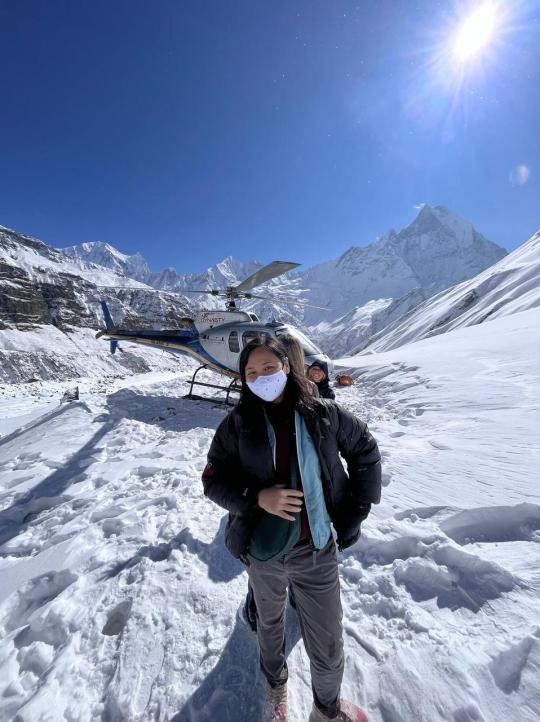
Price for shared and charter helicopter ride to Annapurna Base Camp
We believe in transparency and affordability. Our pricing structure is straightforward, with no hidden costs:
Individual: USD 420 per person
Group of 5: USD 380 per person
Private Tour: USD 1900

Read Before You Book The Ride.
1. The helicopter ride may delay due to visibility blur within the 1 km range, air traffic and lengthier weather confirmation. In such cases, replacement flights are made on the next day on mutual understanding.
2. If the return ride is cancelled due to bad weather, we will try our best to arrange the accommodation but the expenses need to be paid by the clients themselves.
3. In a shared ride, the cost is divided per person. Apart from the bad weather, the flight can be cancelled if any member of the ride cancels the ride.
4. If any member of the flight cancels the ride during share riding, the flight will only continue if the replacement is found or if the remaining members are willing to bear the cost of a missing person.
5. If the landing is not possible at the targeted destination due to bad weather, the clients can choose an alternate destination. However, a refund will not be done during such cases.

0 notes
Text
Experience the Majesty of the Himalayas: Annapurna Base Camp Helicopter Tour
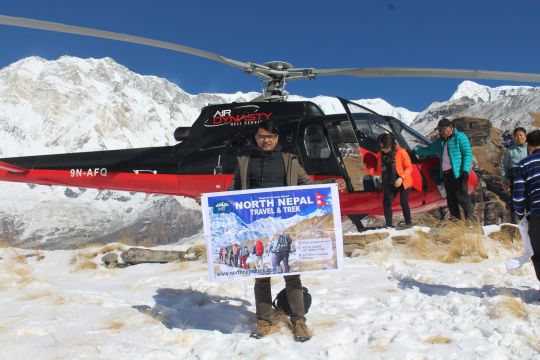
Annapurna Base Camp Helicopter Tour Price
ABC Heli tour From Pokhara
In a mere half-hour, you'll leave behind the hustle and bustle of Pokhara and find yourself amidst the tranquil enormity of the Himalayas. The flight takes you over verdant forests, picturesque villages, meandering rivers, and expansive farmlands, leading up to the snow-covered peaks of the Annapurna range.
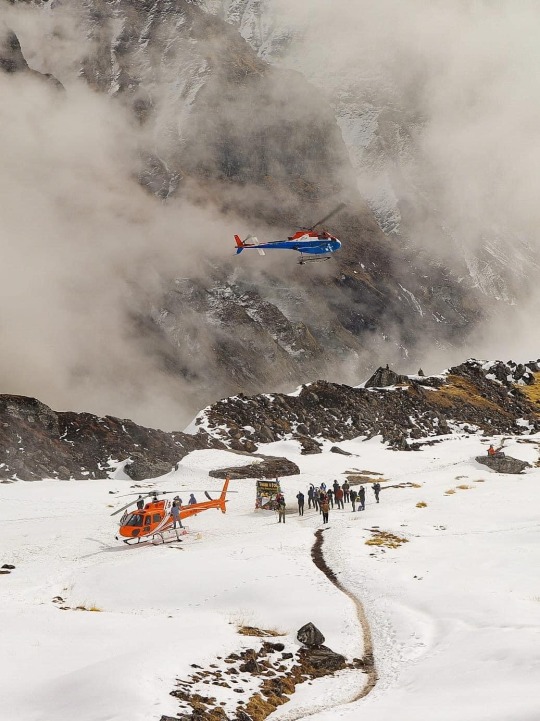
Landing at 4130 Meter
Accessible to All
What makes this tour truly special is its accessibility. Regardless of age or physical condition, the Annapurna Base Camp Helicopter Tour is an inclusive experience. It's especially appealing for those who dream of witnessing the Himalayan range but are unable to undertake the physically demanding trek.

Best Time for Helicopter tour to Annapurna
Tailored for Your Comfort
Our experienced pilots ensure a safe and comfortable journey. Additionally, the tour can be customized with additional stops, offering a more personalized experience to our clients. From cultural insights into local life to mesmerizing views of Himalayan glaciers, every moment of the tour is crafted to be memorable.
Price for shared and charter helicopter ride to Annapurna Base Camp
We believe in transparency and affordability. Our pricing structure is straightforward, with no hidden costs:
Individual: USD 420 per person
Group of 5: USD 380 per person
Private Tour: USD 1900

Read Before You Book The Ride.
1. The helicopter ride may delay due to visibility blur within the 1 km range, air traffic and lengthier weather confirmation. In such cases, replacement flights are made on the next day on mutual understanding.
2. If the return ride is cancelled due to bad weather, we will try our best to arrange the accommodation but the expenses need to be paid by the clients themselves.
3. In a shared ride, the cost is divided per person. Apart from the bad weather, the flight can be cancelled if any member of the ride cancels the ride.
4. If any member of the flight cancels the ride during share riding, the flight will only continue if the replacement is found or if the remaining members are willing to bear the cost of a missing person.
5. If the landing is not possible at the targeted destination due to bad weather, the clients can choose an alternate destination. However, a refund will not be done during such cases.

0 notes
Text
Top 10 things to do in Pokhara
Whether you want to quench your travel lust or just want to spend your holiday leisurely, Pokhara is a place to be. There are many activities you could do here to induce your adrenaline. Below is a comprehensive list of what you could do in this beautiful city to get your blood flowing hot!
Paragliding
Location: Sarangkot, Pokhara
Flight time : 9:30 am or 11:30 am
Duration: 3 Hours
Price: Rs. 5000 per person
Pokhara is regarded highly among the risk-takers to be arguably the best paragliding venue throughout the world itself. The flight takes off from Sarangkot, which itself is in an elevation of 1450 meters. Sarangkot is also the best place for scenic sunrise views. As soon as you undertake your flight, enthralling views of the towering Annapurna and Machhapuchhre on a side and the buzzing Pokhara city on the other will greet you. Down below will be the pristine, shining Phewa Lake and the faraway farmlands. Your glider lands just besides the Lake, which mirrors the mountain range and captures its amazing beauty.
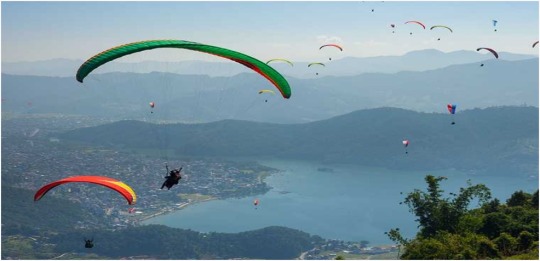
Photo: Paragliding
Bungee
Location: Hemja 80m' orDovilla 100m'
Time: 2-3 Hours
Price: 4500 per person ( Exclusive: 1500 Photo video & T-shirt )
Bungee is one of the most fun activities you’ll do. Pokhara has Nepal’s first and only tower Bungee situated at Hemja,The jump offers 3 seconds of freefall with about 80 meters.Also there is newly opened Bungee called Pokhara Bungee which is 100 meters long. The view of the Himalayas from the jump spot is jaw-dropping.

Photo: Bunjee jump
Zipline
Location: Sarangkot, Pokhara
Duration: 3 Hours
Price: 5000 per person ( Exclusive: 1500 Photo video & T-shirt )
Zip-line in Pokhara ,Zip is the adventure sport you must undertake to feel the nature’s high.. There are two types of zip-line experience you can take: Classic zip-line and Superman zip-line.With a total length of 1.8 Km and a vertical drop of 600 meters, zip-line is one of the most sought out adventure sport in Pokhara. The zipZip-flyer starts from Sarangkot, elevated at 1625 meters. The fun ends at 960 meters in Hemja plain.
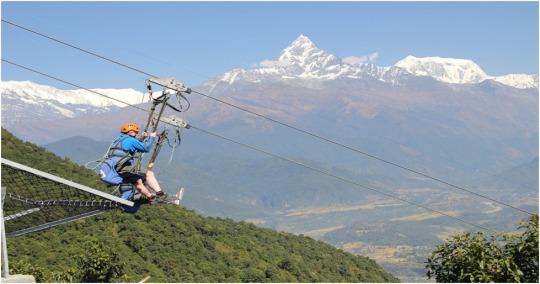
Photo: Zip-fly
Ultralight
Location: Airport, Pokhara
Duration: 15/ 30/ 60/ 90 minutes
Price:
Ultralight is a very light aircraft which has no window and seating for only two persons, including a pilot and a passenger, takes you throughout the valley. You can customize the trip and add any destinations you want to see aerially. Ultralight flight is only available in Pokhara through the whole nation, so you might want to take the benefit. With longer durations, you can observe what this magical valley can offer, along with close aerial views of the beautiful Pokhara and Himalayan backdrop of the Annapurna massif.
Rafting
Location: Bamboo Bridge, Pokhara
Duration: 3.5 -4 hours
Price : Rs.4000
The Seti River runs through Pokhara valley and is an integral part of rafting if water sport is what you’re into. Just half an hour from Pokhara (which will be your starting point), you can enjoy river rafting and kayaking on the Upper Seti River. Though the activity takes about half a day, the exhilarating rapids of the Upper seti will take you 2 hours to complete. Not only that, the Annapurna mountain range will also shine to please your eyes while you raft on the crystal clear water from Himalayas.
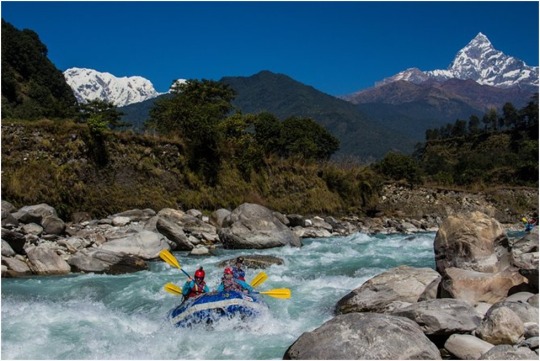
Photo:Rafting
Pokhara Sightseen
Sarangkot Sunrise
Pokhara Shanti Stupa
Shiva Statue
Gupteshor Cave
Davis fall
Bindawasini Temple
Kushma Bungee Jump or Kushma Trip
Kushma Bungee Jump or Kushma Trip is Nepal’s highest bungee and the world’s second-highest bungee Jump which scales the height of 228 Meters. Kushma Bungee jump spot is located on the border of Baglung and the Kushma district of Nepal. These two districts are connected by the 520 Meter suspension bridge in the George of Kaligandakiriver. Kushma Bungee can be part of your 1-day tour activities.
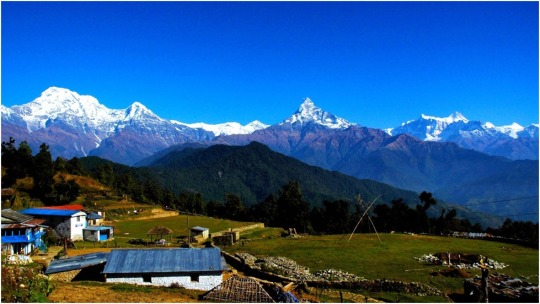
Australian Camp
Australian camp for 1 night 2 days excellent getaway from daily monotonous life that offers very refreshing hiking in the nature and village experience and walk through the terraced farmland and cultural village of Dhampus, Kande and Pothana. The trip starts after well prepared breakfast in Pokhara, an hour smooth drive from Pokhara takes us to Kande at the altitude of 1700 meter from sea level, the starting point of this short trekking of Australian Camp and Dhampus Village trek. This is an easy village walk and a nice hike of 1 night 2 days for the amazing experience luxury holidays near Pokhara valley.
Helicopter tour to ABC in Thapmu
Embark on a thrilling helicopter tour from Thapmu or Pokhara to Annapurna Base Camp (ABC) in Nepal. As the helicopter ascends, Nepal's lush valleys give way to the majestic Annapurna range. Peaks like Annapurna I and the iconic Machhapuchhre reveal their snow-clad magnificence against the vivid sky. The pilot skillfully navigates, granting spectacular views and possibly a brief stop at ABC. The camp, nestled amidst towering peaks and serene glaciers, offers an awe-inspiring experience at high altitudes. The journey back treats you to a panoramic vista of Nepal's natural wonders. In just a few hours, this exhilarating aerial adventure leaves an indelible mark with its breathtaking landscapes and the sheer splendor of the Himalayas, making it an unforgettable expedition into the heart of Nepal's majestic beauty.

0 notes
Text
Discovering the Majestic Trails of North Nepal: A Trekker's Paradise
Nestled amidst the soaring peaks of the Himalayas, North Nepal is a treasure trove for trekkers and adventurers from around the world. With its diverse landscapes, rich cultural heritage, and some of the most awe-inspiring trails on the planet, this region offers an unforgettable experience for every kind of trekker. In this blog, we delve into the most remarkable treks North Nepal has to offer, from the Mardi Himal Trek to the legendary Everest Base Camp Trek.

Mardi Himal Trek: The Hidden Gem
The Mardi Himal Trek is a relatively undiscovered trail, offering an exhilarating experience for those seeking a less trodden path. This trek takes you through lush forests, alpine meadows, and offers up-close views of the Annapurna range. The journey to Mardi Himal Base Camp, situated at an altitude of 4,500 meters, is both challenging and rewarding, with panoramic views of Mardi Himal, Machhapuchhre (Fishtail), and Hiunchuli.
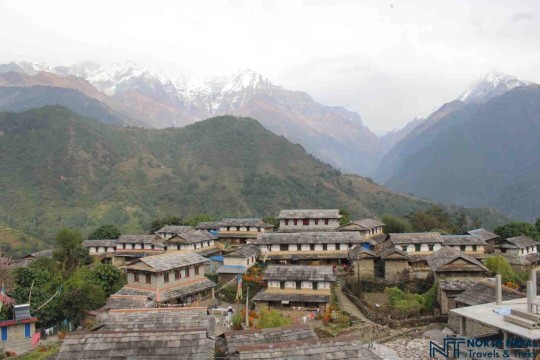
Poonhill Ghandruk Trek: A Cultural Mosaic
The Poonhill Ghandruk Trek is perfect for those who wish to experience the rich cultural fabric of North Nepal alongside stunning natural landscapes. This trek is relatively easier, making it ideal for families and beginners. The highlight is the sunrise view from Poon Hill, where the golden rays illuminate the peaks of Dhaulagiri, Annapurna South, and Machhapuchhre. The trek also winds through the charming village of Ghandruk, offering insights into the Gurung culture.

Annapurna Base Camp Trek: The Classic Journey
A list of North Nepal's best treks would be incomplete without mentioning the Annapurna Base Camp Trek. This trek is a blend of natural beauty, cultural richness, and challenging trails. Trekking through the Annapurna Sanctuary, you are surrounded by giants such as Annapurna I, Annapurna South, and Machhapuchhre. The base camp itself is located at an altitude of 4,130 meters, providing an unforgettable Himalayan experience.
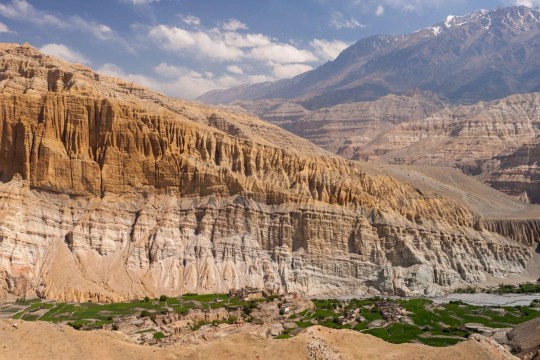
Upper Mustang Trek: The Forbidden Kingdom
The Upper Mustang Trek takes you to a remote and ancient kingdom with a landscape resembling the Tibetan plateau. This area was restricted to outsiders until the 1990s, preserving its mystique and cultural integrity. The trek offers a unique blend of barren landscapes, ancient monasteries, and unique Tibetan culture. Lo Manthang, the walled capital of Mustang, is a highlight with its medieval charm and historical significance.

Manaslu Circuit Trek: The Untouched Beauty
For those seeking solitude and unspoiled natural beauty, the Manaslu Circuit Trek is a perfect choice. Circling the eighth highest mountain in the world, Mount Manaslu, this trek offers a challenging yet rewarding experience. The trail passes through remote villages, dense forests, and high mountain passes, including the Larkya La Pass at 5,160 meters. This trek is a fantastic alternative to the more crowded Annapurna and Everest treks.

Everest Base Camp Trek: The Ultimate Challenge
The Everest Base Camp Trek is a dream for many trekkers, offering the chance to stand at the foot of the world's highest mountain. This trek is not just about the destination but also about the journey, passing through the famous Namche Bazaar, Tengboche Monastery, and the Khumbu Glacier. The view from Kala Patthar, overlooking the Everest Base Camp, is simply breathtaking.
Embracing Sustainable Trekking
As you embark on these treks, it's important to remember the principles of sustainable trekking. North Nepal Travel and Trek Pvt Ltd is committed to preserving the natural environment and supporting local communities. We encourage trekkers to minimize their environmental impact and engage with local cultures respectfully.
Conclusion
North Nepal offers some of the most diverse and stunning trekking experiences in the world. Whether you're a seasoned trekker or a beginner, these trails promise adventure, cultural immersion, and memories that will last a lifetime. At North Nepal Travel and Trek Pvt Ltd, we are passionate about helping you explore these magnificent trails and ensuring your journey is safe, enjoyable, and enriching.

0 notes
Text
Exploring the Cultural Heart of Nepal: Beyond the Trekking Trails
While Nepal is globally renowned for its breathtaking trekking routes and the towering Himalayas, the country's rich cultural tapestry is equally mesmerizing. In this blog, we'll journey through Nepal's vibrant cultural heritage, exploring ancient cities, sacred temples, and unique traditions that make this country a kaleidoscope of cultural experiences. Join us as North Nepal Travel and Trek Pvt Ltd takes you beyond the trekking trails to the heart of Nepalese culture.
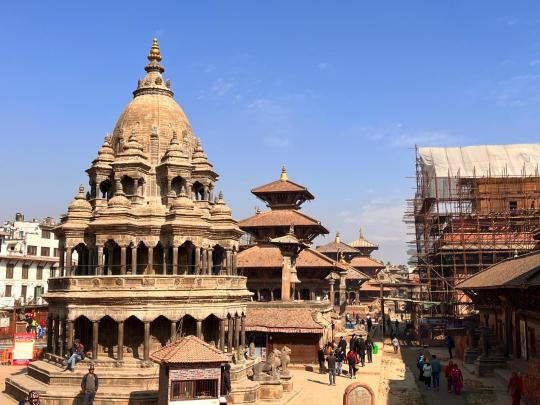
Kathmandu Valley: A Cultural Melting Pot
The journey begins in the Kathmandu Valley, a UNESCO World Heritage site, brimming with history and culture. The valley is home to seven World Heritage Sites, including the historic Durbar Squares of Kathmandu, Patan, and Bhaktapur. These squares are lined with palaces, courtyards, and temples that date back centuries, showcasing the architectural splendor of the Malla Dynasty.
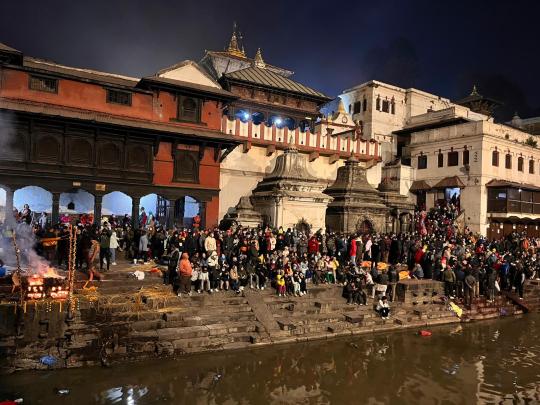
Swayambhunath and Pashupatinath: Symbols of Spirituality
Swayambhunath Stupa, also known as the Monkey Temple, offers panoramic views of Kathmandu and is a significant Buddhist pilgrimage site. Similarly, Pashupatinath Temple, a sacred Hindu shrine dedicated to Lord Shiva, presents an intimate look at Hindu rituals and ceremonies, especially along the banks of the Bagmati River.
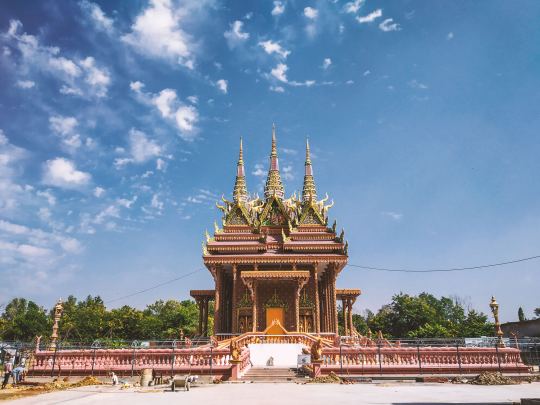
Lumbini: The Birthplace of Buddha
A pilgrimage to Lumbini, the birthplace of Lord Buddha, is a journey into spiritual tranquility. This UNESCO World Heritage Site is not only important to Buddhists but also offers insights into ancient Nepalese history. The Maya Devi Temple, the sacred garden, and the Ashoka Pillar are key attractions here.

Pokhara: A Blend of Nature and Culture
Pokhara, the gateway to the Annapurna region, is not just about stunning landscapes and adventure activities. The city's cultural aspect is evident in its museums, the traditional Bindhyabasini Temple, and the vibrant Tibetan settlements. A boat ride on Phewa Lake with the backdrop of the Himalayas adds to the city's charm.
Chitwan and Tharu Culture
Chitwan, famous for its National Park, is also the homeland of the Tharu people. The Tharu community is known for its unique culture, traditional mud houses, and colorful dances. A cultural tour here offers an authentic experience of their lifestyle and traditions, complemented by jungle safaris and wildlife sightings.
Festivals: The Living Heritage of Nepal
Nepal's calendar is filled with festivals, each with its unique significance and allure. From the colorful Holi festival to the grandeur of Dashain and Tihar, these festivals offer a glimpse into the country's rich cultural and religious diversity. Participating in these festivals is a profound way to connect with the local culture.
Sustainable Cultural Tourism
As we explore these cultural landmarks, North Nepal Travel and Trek Pvt Ltd emphasizes sustainable and responsible tourism practices. We believe in supporting local communities and preserving the cultural heritage of Nepal for future generations.
Conclusion
Nepal's cultural journey is as compelling as its mountain trails. It's a land where history, spirituality, and traditions blend seamlessly, offering travelers an enriching experience beyond the trekking paths. With North Nepal Travel and Trek Pvt Ltd, embark on a journey that connects you deeply with the heart and soul of Nepal.
0 notes
Text
How to Do Manaslu Circuit Trek in 11 Days
How to Do Manaslu Circuit Trek in 11 Days
The Manaslu Circuit Trek is a spectacular journey that takes trekkers around the world’s eighth highest mountain, Manaslu, in Nepal. This 11-day trek is an ideal choice for those looking to experience the beauty and challenge of the Himalayas away from the more crowded trails like Everest Base Camp or Annapurna Circuit. The trek is not only a physical adventure but also a cultural experience, as it winds through remote regions rich in Tibetan culture.
Highlights of the Trek
Varied Terrain: Trekkers will navigate through diverse landscapes, including lush forests, rugged valleys, and high-altitude passes.
Larkya La Pass: The highest point of the trek at 5,106 meters, offering breathtaking panoramic views of Himalayan peaks.
Rich Cultural Experience: The route goes through traditional Tibetan villages, where trekkers can immerse themselves in the local culture and lifestyle.
Flora and Fauna: The region is rich in biodiversity, with a chance to witness unique Himalayan flora and fauna.
Remote and Less Crowded: Being less traveled compared to other popular routes in Nepal, the Manaslu Circuit offers a more solitary and authentic trekking experience.
Physical Demands and Preparation
The Manaslu Circuit Trek is considered a challenging trek due to its high altitude and the physical endurance required. Trekkers should be in good physical condition and have some prior trekking experience. Acclimatization days are essential to adapt to the high altitude and reduce the risk of altitude sickness.
Cultural Aspects
The trek provides an opportunity to experience the rich culture of the region, influenced by Tibetan traditions. Trekkers will pass through villages with Buddhist monasteries, chortens, and mani walls, offering insights into the spiritual practices of the local communities.
Accommodation and Logistics
The trek is typically completed in teahouses, which offer basic lodging and meals, adding to the authentic experience of the trek. The starting point is a drive from Kathmandu to Soti Khola, and the trek concludes with a drive back to Kathmandu from Dharapani.
Best Time to Trek
The best times for the Manaslu Circuit Trek are during the spring (March to May) and autumn (September to November) seasons when the weather is most favorable.
11 Days Itinerary
Day 1: Kathmandu to Soti Khola
Duration: 7-8 hours
The journey begins with an early morning drive from Kathmandu to Soti Khola. This includes both sealed and unsealed roads, passing through Dhading Bensi and Arughat before reaching Soti Khola.
Day 2: Soti Khola to Machha Khola
Duration: 5-6 hours
The trek starts in the woods, heading upriver along the Budhi Gandaki River before descending to the riverbed and following a mountain trail with numerous views.
Day 3: Machha Khola to Jagat
Duration: 6-7 hours
The route involves crossing the Machha Khola River, passing through Khorlabesi and Tatopani, and entering the Budhi Gandaki Valley. The trek to Jagat Village offers a change in vegetation and landscape.
Day 4: Jagat to Deng
Duration: 6-7 hours
The trail leads through Sirdibas Village and crosses a suspension bridge to Philim. The journey continues through Ekle Bhatti and Pewa Village before reaching Deng Village. [25]
Day 5: Deng to Namrung
Duration: 5-6 hours
Starting with a steep ascent and then heading back down to the Budi Gandaki River, the trail passes through several small settlements. Near Namrung Village, you'll encounter many Mani stones.
Day 6: Namrung to Samagaun
Duration: 6-7 hours
The trek passes through Lho Village, with views of Ngadi Chuli. A short detour to the Pungen Glacier offers views of Mt. Manaslu.
Day 7: Samagaun to Samdo
Duration: 4-5 hours
This segment involves crossing yak and cattle pastures and entering the valley, with views of surrounding peaks, before reaching the Tibetan refugee village of Samdo.
Day 8: Samdo to Dharmashala
Duration: 4-5 hours
The trek crosses a wooden bridge over the Budi Gandaki and involves a gentle ascent to Dharamsala, surrounded by mountains and the Larkya Glacier.
Day 9: Dharmashala to Bimthang via Larke La Pass
Duration: 7-9 hours
The trail reaches the highest point of the trek at Larkya La Pass (5106m), offering views of several Himalayan mountains. The descent to Bhimthang involves passing an iced-over lake and rocky terrain.
Day 10: Bimthang to Dharapani
Duration: 6-7 hours
The final trekking day involves a downhill path through rhododendron and oak forests, eventually reaching Dharapani in the Annapurna region.
Day 11: Dharapani to Kathmandu
Duration: 6-7 hours (by jeep)
The journey concludes with a drive from Dharapani to Kathmandu, passing through lush green hills and terraced farmlands with mountain views.
0 notes
Text
Journey to the Top of the World: An Unforgettable Everest Base Camp Trek
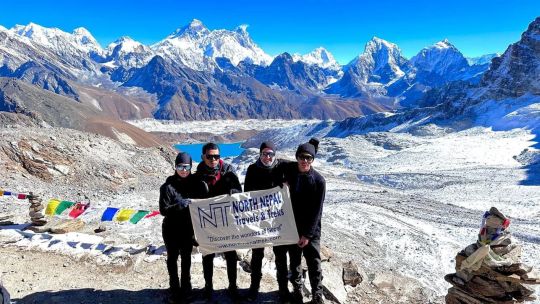
At 29, filled with youthful vigor and a passion for exploring, my girlfriends and I embarked on a journey that would etch itself into our hearts forever. The majestic Everest Base Camp, a dream for many adventurers around the globe. Our 17-day odyssey, a blend of natural beauty and cultural immersion, was meticulously organized by North Nepal Travel and Trek, with the ever-capable Jiwan as our guide.

In a sea of agencies in Nepal, finding the right one can be daunting. But our search ended at North Nepal Travel & Trek. Their warmth and professionalism shone through from our very first interaction. After completing a 20-day trek in the Manaslu region with another company, we were eager for more. The Three Passes trek in the Everest region was calling, and North Nepal in Pokhara was our beacon.
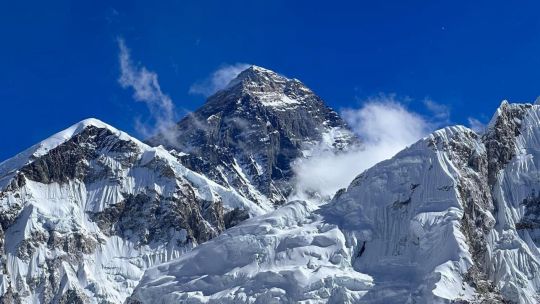
The heart of our journey was our guide, Zeewan. Meeting him in Kathmandu, we were immediately struck by his expertise and passion. Zeewan wasn't just a guide; he was a guardian, a coach, and a friend. His knowledge of the mountains and his attention to our pace and safety were impeccable. When altitude sickness struck, his guidance and tips were invaluable, helping me recover swiftly.

Our porter, Binaram, met us in Lukla. His strength, patience, and ever-present smile made him an integral part of our journey. He was more than a porter; he was part of our traveling family.
Here's where I add a bit of creative flair to our story:
The Starlit Night at Gokyo Ri: One of the most magical moments was our night at Gokyo Ri. As the sky turned a deep velvet, it was lit by a million stars, creating a celestial spectacle. We shared stories and marveled at the universe's vastness, feeling humbled and connected.
The Sherpa Culture: Immersing ourselves in the local Sherpa culture was enlightening. We participated in a traditional Sherpa dance and even tried our hand at making some local delicacies. Their warmth and resilience added depth to our adventure.
The Flora and Fauna: Trekking through diverse landscapes, we encountered exotic wildlife. Spotting a Himalayan Monal, Nepal's national bird, was a rare and colorful delight.
The Unexpected Friendship: Along the trail, we befriended fellow trekkers from around the world. One evening, we gathered around a campfire, sharing tales and forging bonds that would last a lifetime.Returning to Pokhara, Mohan's thoughtful gestures – certificates, t-shirts, and traditional Buddhist scarves – were the perfect conclusion to our epic journey. His check-ins during the trek were reassuring and appreciated.
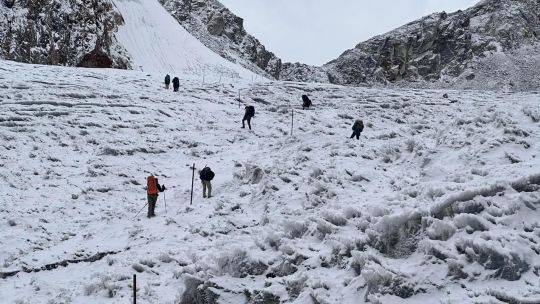
Our journey to Everest Base Camp with North Nepal Travel and Trek was more than just a trek; it was a life-changing experience. The beauty of Nepal, the warmth of its people, and the challenges of the trek have left an indelible mark on us. We returned home not just as travelers, but as storytellers, eager to share the wonders of this amazing country with the world.
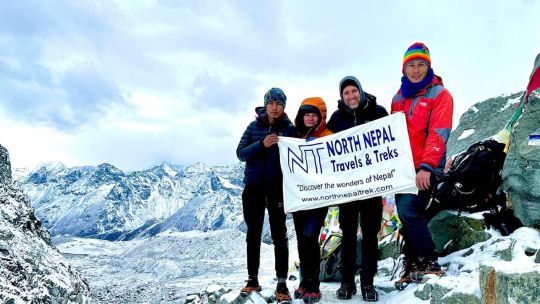
0 notes
Text
Affordable Trekking in Nepal: Exploring the Himalayas on a Budget
Nepal, a land of sublime landscapes and towering peaks, is a dream destination for many trekkers. Often, the misconception is that such an adventure is costly, but Nepal offers numerous trekking options that are both affordable and spectacular. In this blog, we explore how you can experience the best of the Himalayas without breaking the bank.
Embracing the Off-the-Beaten-Path Trek
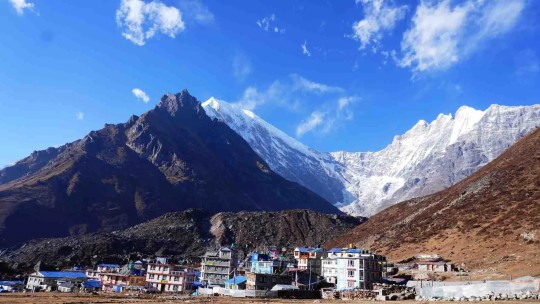
Langtang Valley Trek: Often overshadowed by its famous counterparts, the Langtang Valley Trek is a hidden gem. It's not only more affordable but also less crowded, offering an authentic experience of the Himalayan landscapes and culture.

Ghorepani Poon Hill Trek: Ideal for beginners and those short on time, this trek is a cost-effective way to witness the grandeur of the Annapurna range. The trek to Poon Hill is relatively short and offers some of the most breathtaking sunrise views over the Himalayas.

Tamang Heritage Trail: This trek takes you through the culturally rich Tamang villages, close to the Tibetan border. It's a fantastic way to experience the unique culture of the region without the higher costs associated with more popular treks.
Smart Planning and Budgeting
Book in Advance: Planning your trek in advance can save you money, especially when it comes to flights and accommodations.
Travel During the Off-Peak Season: Trekking during the off-peak season (like late spring or early winter) can significantly reduce costs as accommodation and guide fees are often lower.
Opt for Teahouse Trekking: Staying in teahouses rather than luxury lodges cuts down costs dramatically. Teahouses offer basic but comfortable accommodations along with the opportunity to interact with locals.
Group Trekking: Share and Save
Joining a group trek can significantly cut down costs. Shared guides, porters, and transportation reduce individual expenses. Plus, trekking in a group is a great way to meet fellow travelers and share experiences.
Local Guides and Porters: Affordable and Ethical
Hiring local guides and porters not only supports the local economy but also tends to be more affordable than going through large, international trekking agencies. Ensure that they are treated ethically, with fair wages and good working conditions.
Pack Wisely to Avoid Unnecessary Expenses
Bringing essential gear from home can save money that might otherwise be spent on renting or purchasing equipment in Nepal. However, basic trekking gear is often more affordable in Kathmandu or Pokhara, so do some research before you arrive.
Sustainable Trekking: A Cost-Effective Approach
Adopting sustainable trekking practices can also be cost-effective. For example, using refillable water bottles instead of buying bottled water not only saves money but also helps preserve the environment.
Conclusion
Affordable trekking in Nepal is not only possible but can also offer a more authentic and intimate experience of the majestic Himalayas. With smart planning, choosing lesser-known trails, and embracing local experiences, your trek in Nepal can be both budget-friendly and deeply fulfilling.
0 notes
Photo
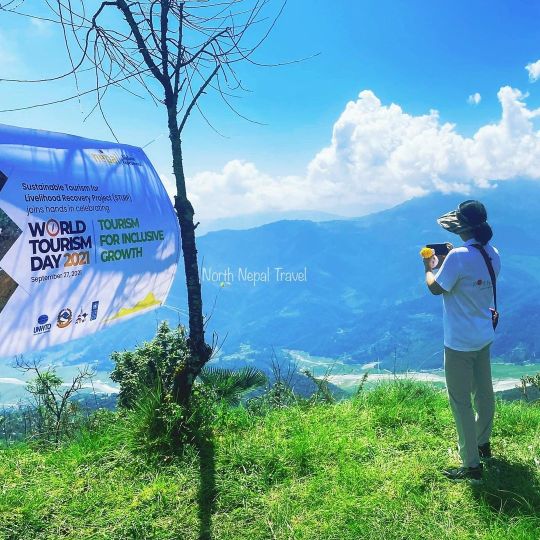
World tourism day Day hike Naudada(My birth place) -Sarangkot.#northnepaltrek #worldtourismday2021 (at Naudanda) https://www.instagram.com/p/CUXWA3qB5Rn/?utm_medium=tumblr
0 notes